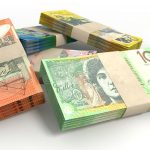Japanese Yen falls as traders exercise caution owing to rising market volatility.
The Japanese yen (JPY) fell against the US dollar (USD) on Friday. Traders are keenly watching Japan’s monetary policy outlook, as central bank officials have expressed a willingness to raise interest rates further, though they have become more cautious due to heightened market volatility.
Shunichi Suzuki, Japan’s finance minister, will continue to closely monitor market events.
Japan’s Finance Minister Shunichi Suzuki reiterated on Thursday that monetary policy decisions are under the purview of the Bank of Japan, while they continue to closely monitor market events. As reported by Reuters.
US dollar under pressure due to increased likelihood of a 25-basis-point rate drop in September.
The US dollar is under pressure as expectations rise that the Federal Reserve (Fed) will decrease interest rates in September. Traders assess confusing signals from the US economy, attempting to predict whether it would have a soft landing or fall into recession. The CME FedWatch tool indicates that markets are now fully expecting the Fed to decrease interest rates by 25 basis points in September.
Daily Digest Market Movers: Japanese Yen gains support as Fed may take a dovish approach.
A Julius Baer analyst says there is no need for the Bank of Japan to significantly hike interest rates above current levels. Once market circumstances settle, the interest rate spread between the JPY and USD is likely to be about 500 basis points. To become the primary factor. The analyst does not see the Yen appreciating further.
Bloomberg stated that JP Morgan Asset Management (JPAM) believes the Bank of Japan is unlikely to hike interest rates in the foreseeable future. According to JPAM, the BoJ may only consider additional rate hikes if the Federal Reserve lowers interest rates and the US economy stabilizes. They believe that any future tightening by the BoJ is more likely to occur in 2025, if the global economic climate remains steady.
On Thursday, Kansas City Fed President Jeffrey Schmid suggested that lowering monetary policy may be “appropriate” if inflation remains low. Schmid stated that the current Fed policy is “not that restrictive” and that, while the Fed is nearing its 2% inflation target, According to Reuters, it has not yet reached its full potential.
US first jobless claims fell to 233,000 for the week ending August 2, falling short of market expectations of 240,000. This fall comes after an upwardly revised total of 250,000 for the previous week, the highest in a year.
The Bank of Japan’s Summary of Opinions from the Monetary Policy Meeting on July 30 and 31 revealed that several members feel economic activity and prices are proceeding as expected by the bank. The members aim for a neutral rate of “at least around 1%” as a medium-term goal.
BoJ Deputy Governor Shinichi Uchida also stated that the BoJ’s interest rate strategy will adjust if market volatility impacts economic predictions.
On Wednesday, BoJ Deputy Governor Shinichi Uchida also stated that the BoJ’s interest rate strategy will adjust if market volatility impacts economic predictions, risk assessments, or projections. Given recent market volatility, he underlined the importance of closely monitoring the economic and pricing implications of their policies, noting, “We must maintain the current degree of monetary easing for the time being.”
According to the minutes of the Bank of Japan’s June meeting, some members expressed concern about rising import prices caused by the JPY’s recent drop, which could offer an upside risk to inflation. One member suggested that cost-push inflation could exacerbate underlying inflation if it leads to higher inflation expectations and wage growth.









